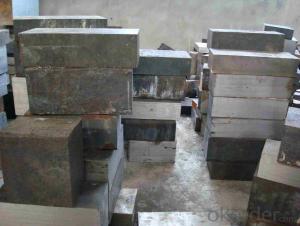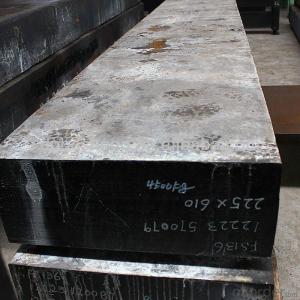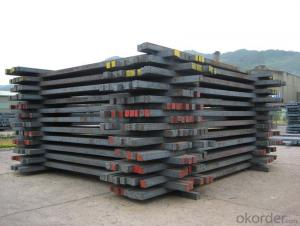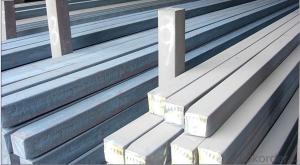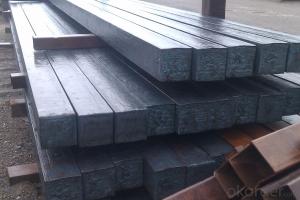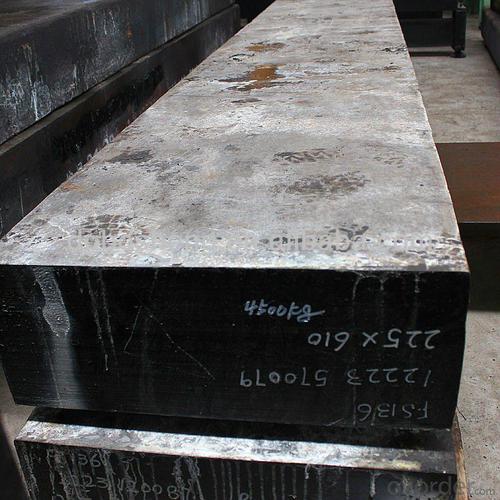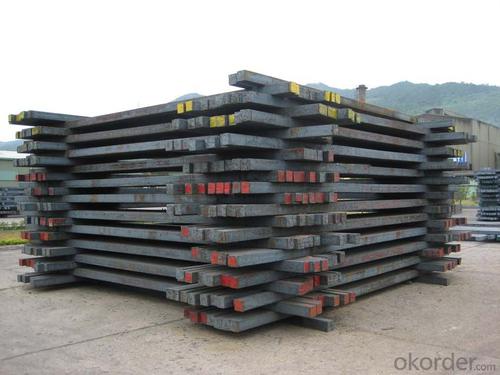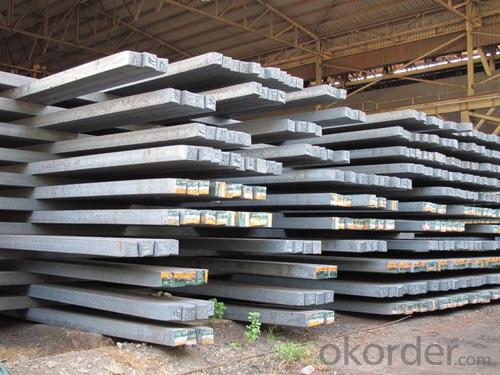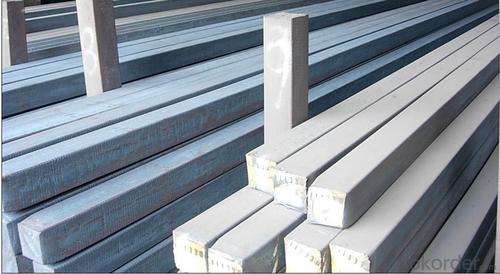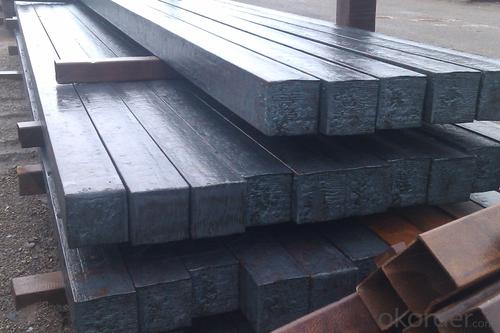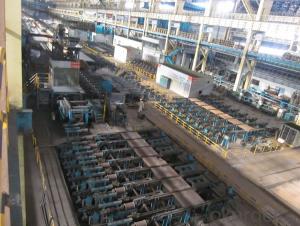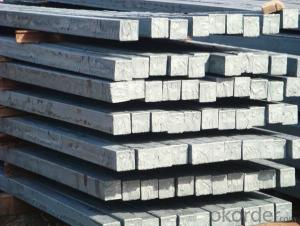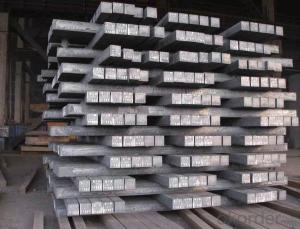Prime quality square alloy steel billet 110mm Q235
- Loading Port:
- Tianjin
- Payment Terms:
- TT OR LC
- Min Order Qty:
- 100 m.t.
- Supply Capability:
- 10000 m.t./month
OKorder Service Pledge
OKorder Financial Service
You Might Also Like
Structure of Prime quality square alloy steel billet 110mm Q235
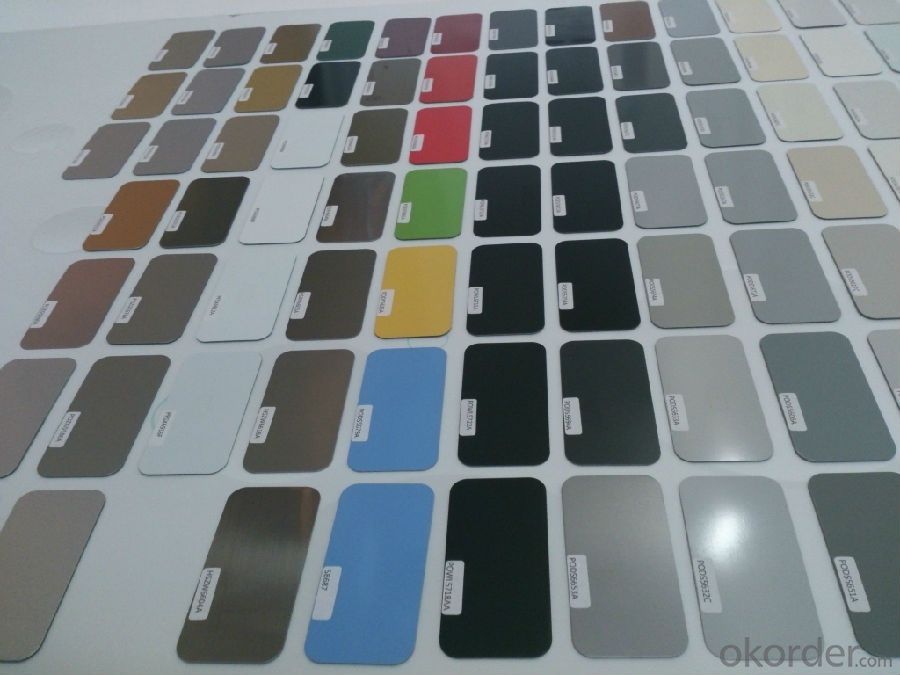
Description of Prime quality square alloy steel billet 110mm Q235
1. Prepainted steel coil is coated with organic layer, which provides higher anti-corrosion property and a longer lifespan than that of galvanized or galvalume steel sheets.
2. The base metals for prepainted steel coil consist of cold rolled, HDGI Steel, electro-galvanized and hot-dip alu-zinc coated steel. The finish coats of prepainted steel coil can be classified into groups as follows: polyester, silicon modified polyesters, polyvinylidene fluoride, high-durability polyester, etc.
3. The production process has evolved from one-coating-and-one-baking to double-coating-and-double-baking, and even three-coating-and-three-baking.
4. The color of the prepainted steel coil has a very wide selection, like orange, cream-colored, dark sky blue, sea blue, bright red, brick red, ivory white, porcelain blue, etc.
5. The prepainted steel coils can also be classified into groups by their surface textures, namely regular prepainted sheets, embossed sheets and printed sheets.
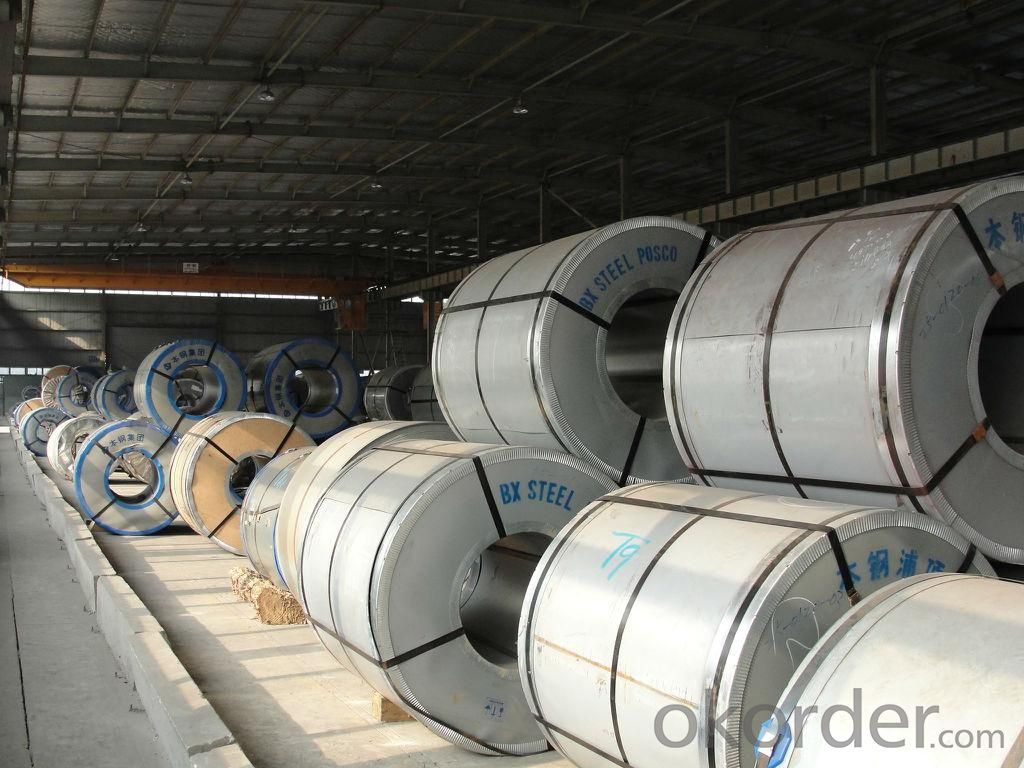
Main Feature of Prime quality square alloy steel billet 110mm Q235
Uncoated CR steel sheet
With the features of in line with the international highest standards in demension and shape, excellent surface finish and properties, the products are mainly used in home appliance and automobile industries.
Galvanized steel sheet(include HDG and EG)
With the features of good corrosion resistance, the products are mainly used in automobile, home appliance, electronics, building and machinery manufacture industries, etc.
Precoated steel sheet
With the features of enviromental protection and good processablility, long lasting surface durability, rich in colors, the products are maily used in building, home appliance and furniture industries, etc.
Applications of Prime quality square alloy steel billet 110mm Q235
Construction
Manufacture anticorrosion, industrial and civil architecture roof boarding, roof grille
Light industries
Home appliance's case, civil chimney, kitchen utensils
Auto industry
Corrosion resistant parts of cars
Agriculture
Food storage, meat and aquatic products' freezing and processing equipment
Commerce
Equipments to store and transport materials, and packing implements
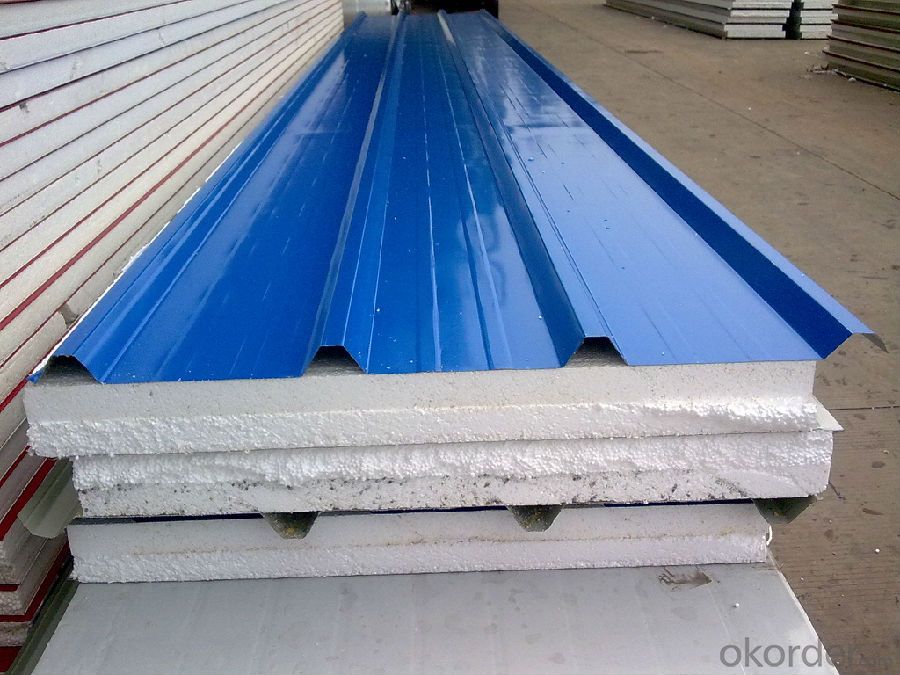
Specifications of Prime quality square alloy steel billet 110mm Q235
Product | Prime quality square alloy steel billet 110mm Q235 |
Material Grade | SGCC / SGCH / DX51D+AZ, etc |
Thickness | 0.6-3.0mm |
Width | 500-1500mm |
Tolerance | Thickness: +/-0.02mm , Width:+/-2mm |
Zinc-coating | Z30-150g/m2 |
Technique | Raw material: Hot rolled steel coil --> Cold rolled_>hot dipped galvalume |
Surface | Dried, Chromated, Unoiled |
Spangle | Regular spangle , small spangle, zero spangle |
ID | 508MM 610MM |
Coil weight | 1-25MT |
Export package | Cardboard inner sleeves, Waterproof paper, galvanized steel covered and steel strip packed |
FAQ of Prime quality square alloy steel billet 110mm Q235
We have organized several common questions for our clients,may help you sincerely:
1. How Can I Visit There?
Our company is located in Tianjin City, China, near Beijing. You can fly to Tianjin Airport Directly. All our clients, from home or aboard, are warmly welcome to visit us!
2. How Can I Get Some Sample?
We are honored to offer you sample.
3. Why choose CNBM?
Our delivery time about 15-20days for standard sizes, if you have other requirements like hardness, quanity and width ,it is about 20-40days. But don't worry we also try our best for the delivery time ,because time longer and our cost is higher.
- Q: Difference between medium frequency continuous casting billet and electric furnace continuous casting billet
- In general, the difference between medium frequency furnace steelmaking and electric arc furnace steelmaking:1, intermediate frequency furnace slag can not, so the harmful elements such as P, S and other elements can not be removed, and the electric arc furnace can;2, if not blowing furnace carbon reduction, so C elements cannot be adjusted downward, and the arc furnace can only increase;
- Q: How are steel billets shaped into other forms?
- A process known as hot rolling is used to transform steel billets into different forms. This process involves feeding the steel billet through heated rollers, which compress and mold it into the desired shape. To begin, the steel billet is heated to a high temperature in a furnace. This heat treatment makes the steel more malleable and easier to shape. Once the billet has reached the desired temperature, it is then sent into a rolling mill. Within the rolling mill, the billet undergoes a series of passes through rollers that apply pressure and force to shape the steel. These rollers come in various shapes and sizes depending on the desired outcome. As the billet passes through the rollers, it gradually takes on the desired form, such as sheets, bars, or beams. The rolling process not only shapes the steel but also improves its mechanical properties. It refines the grain structure, enhances strength and toughness, and eliminates any internal defects. This makes the steel more suitable for a range of applications, including construction, automotive, and machinery. Following the hot rolling process, the steel often undergoes additional processing through cold rolling. This involves passing the steel through cold rollers to further refine its surface finish and dimensions. Additionally, secondary operations like cutting, bending, and welding may be carried out to further shape the steel into the desired end product. In conclusion, hot rolling plays a vital role in transforming steel billets into various forms. It enables the production of a wide range of steel products, each with its own unique shape, size, and mechanical properties. This helps meet the diverse needs of industries worldwide.
- Q: What is the purpose of using steel billets in the manufacturing industry?
- The purpose of using steel billets in the manufacturing industry is to provide a starting material for the production of various steel products. Steel billets are semi-finished products that undergo further processing, such as rolling or forging, to shape them into the desired form. These billets serve as a crucial raw material for industries involved in construction, automotive, machinery, and other sectors that require steel in their manufacturing processes.
- Q: What is the role of steel billets in the construction of underground tunnels?
- Steel billets play a crucial role in the construction of underground tunnels as they are used to create the reinforced steel framework. These billets are shaped into various structural components, such as bars and beams, which provide strength and stability to the tunnel structure. The reinforced steel framework helps to distribute the load evenly, withstand the pressure from the surrounding soil or rock, and prevent any potential collapse or deformation of the tunnel. Therefore, steel billets contribute significantly to the overall durability and safety of underground tunnels.
- Q: Are steel billets used in the aerospace industry?
- Yes, steel billets are indeed used in the aerospace industry. Steel is a crucial material in the aerospace sector due to its high strength, durability, and resistance to corrosion. Steel billets, which are semi-finished steel products in a solid form, are used as raw materials for manufacturing various components in aircraft and spacecraft construction. These billets are often further processed through forging, rolling, or extrusion to create specific shapes and sizes required for aerospace applications. These components include structural parts like frames, wings, landing gears, and engine components, where the strength and reliability of steel are essential to ensure the safety and performance of the aircraft. Additionally, steel billets are also used in the manufacturing of tools, fixtures, and machinery used in the aerospace industry. Overall, steel billets play a significant role in the aerospace industry, contributing to the production of robust, reliable, and high-performance aerospace equipment.
- Q: How are steel billets used in the production of pump parts?
- Steel billets are used in the production of pump parts by being heated, shaped, and then machined into specific components such as impellers, casings, or shafts. These billets, which are semi-finished products made of solid steel, provide the raw material needed for manufacturing durable and high-performance pump parts. The process involves melting the steel billets in a furnace, pouring the molten metal into molds, and allowing it to solidify into the desired shape. After cooling, the billets are further processed through machining operations like cutting, drilling, and grinding to achieve the final dimensions and surface finish required for pump components.
- Q: How are steel billets used in the production of shipbuilding materials?
- Steel billets play a vital role in shipbuilding materials as they are necessary for producing strong and durable components. Shipbuilding requires materials that can withstand harsh marine conditions, and steel billets fulfill these requirements. To begin with, steel billets are utilized in the production of different types of steel plates. These plates form the basis of shipbuilding materials and are customized according to specific design needs, such as hull plating, bulkheads, decks, and superstructures. Steel billets provide the essential raw material for creating these plates, ensuring they possess the required strength and structural integrity. Furthermore, steel billets are crucial in manufacturing shipbuilding sections and profiles. These sections, including beams, angles, channels, and other structural components, provide support and reinforcement to the ship's structure. Steel billets are heated and shaped through processes like rolling, forging, or extrusion to form these sections. This allows for the creation of custom-shaped sections that seamlessly integrate into the ship's construction. Additionally, steel billets are also used in producing shipbuilding forgings, which are high-strength components requiring exceptional mechanical properties. Forgings are vital for critical ship parts like propeller shafts, rudder components, and engine parts. Steel billets are heated and shaped using forging techniques to create these components, ensuring they possess the necessary strength, toughness, and resistance to fatigue. In conclusion, steel billets are a fundamental raw material extensively used in shipbuilding. They are transformed into various forms such as plates, sections, and forgings, which are then incorporated into the construction of ships. The utilization of steel billets guarantees that shipbuilding materials meet the stringent requirements for strength, durability, and performance in marine environments.
- Q: Can steel billets be used in the production of bicycles?
- Yes, steel billets can be used in the production of bicycles. Steel billets are semi-finished products made from steel and can be further processed into various shapes and sizes. In the case of bicycles, steel billets can be shaped and formed into different bicycle components such as frames, forks, handlebars, and other structural parts. Steel is a popular choice for bicycle production due to its strength, durability, and affordability. It provides excellent stiffness, stability, and resistance to deformation, making it suitable for various types of bicycles, including road bikes, mountain bikes, and hybrid bikes. Additionally, steel can be easily welded, allowing for customization and repairability of bicycle frames.
- Q: How are steel billets used in the production of molds?
- The production of molds relies heavily on steel billets, which act as the primary material for creating the mold itself. The initial step involves the selection of a suitable steel billet, typically a solid rectangular or square piece of steel. Once chosen, the steel billet undergoes a series of manufacturing processes to transform it into a mold. Initially, the billet is heated to a high temperature referred to as the forging temperature. This heating process is crucial as it enhances the malleability of the steel, making it easier to work with and shape according to the desired form. Following the heating process, the steel billet is subjected to various shaping techniques, including rolling, pressing, or hammering. These techniques aid in shaping the steel into the desired mold design, which can range from simple to complex, depending on the intended application. Upon achieving the desired shape, the steel billet is cooled down and further refined through processes such as machining, grinding, and polishing. These additional processes ensure that the mold's surface finish and dimensional accuracy are refined, resulting in a precise mold capable of producing high-quality products. In summary, steel billets serve as the foundation material in the production of molds. Through shaping and refining processes, customized mold designs are created. These molds find application in diverse industries such as automotive, aerospace, and manufacturing, where they are utilized to manufacture a wide range of products.
- Q: What are the common surface defects found in steel billets?
- Steel billets commonly exhibit surface defects, including scale, surface cracks, inclusions, decarburization, surface roughness, roll marks, and lamination. Scale, an oxide layer formed during manufacturing, appears as a flaky, rough coating and impacts steel quality. Surface cracks, caused by improper cooling, handling, or excessive stress, weaken the steel. Inclusions, non-metallic impurities like oxides or sulfides, create weak spots. Decarburization, carbon loss from the billet's surface due to high temperatures or inadequate protection, reduces hardness and strength. Surface roughness, irregularities from processing or handling, affects appearance. Roll marks result from issues with rolling mill equipment. Lamination refers to layering or separations within the billet, caused by poor solidification, temperature control, or impurities. Detecting and addressing these defects is crucial for producing high-quality steel. Inspection techniques like visual inspection, ultrasonic testing, magnetic particle testing, and eddy current testing help identify and classify defects.
Send your message to us
Prime quality square alloy steel billet 110mm Q235
- Loading Port:
- Tianjin
- Payment Terms:
- TT OR LC
- Min Order Qty:
- 100 m.t.
- Supply Capability:
- 10000 m.t./month
OKorder Service Pledge
OKorder Financial Service
Similar products
Hot products
Hot Searches
Related keywords
